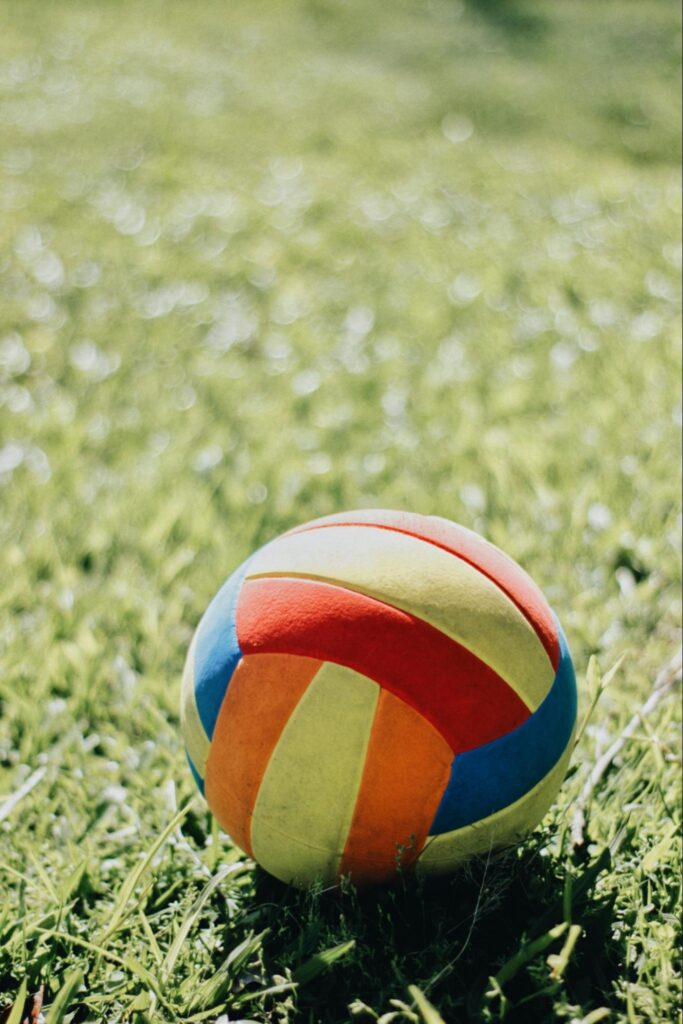Ball sports have been a part of human culture for thousands of years, transcending geographical and cultural boundaries.
The presence of a ball in sports adds an element of unpredictability and skill, enhancing the excitement of the game. And playing with others fosters a sense of community and competition that is both engaging and beneficial for our mental and physical health.
The joy derived from ball sports is deeply rooted in our biology. Physical activity triggers the release of endorphins, the body’s natural feel-good hormones, which help reduce stress and create a sense of well-being.
Engaging in ball sports also stimulates the release of dopamine, a neurotransmitter associated with pleasure and reward.
These hormonal responses contribute to the sense of joy and satisfaction that comes from playing sports. And here’s which sports:
Soccer
Soccer, known as football outside North America, is one of the most popular sports worldwide. It involves constant running, quick changes in direction, and strategic thinking, making it an excellent cardiovascular workout.
Playing soccer improves endurance, strength, and agility while also promoting teamwork and social skills. The sport requires players to be constantly on the move, which enhances their aerobic capacity and builds lower body strength.

The need for precise footwork and ball control improves coordination and balance. The collaborative nature of soccer, where players must work together to achieve common goals, also helps develop communication skills and camaraderie among teammates.
Basketball
Basketball is a high-intensity sport that combines aerobic exercise with strength training. Dribbling, shooting, and defending all require coordination and balance.
The fast pace of the game ensures a great cardiovascular workout, helping to burn calories and improve overall fitness. Each movement in basketball, from sprinting across the court to jumping for a rebound, engages multiple muscle groups, providing a full-body workout.

The sport also requires quick reflexes and decision-making skills, which enhance mental acuity and focus. Playing basketball regularly can lead to improved muscle tone, increased endurance, and better hand-eye coordination.
Pickleball
Pickleball is a relatively new sport that combines elements of tennis, badminton, and table tennis. It’s played on a smaller court with a paddle and a plastic ball. Pickleball is easy to learn and suitable for all ages, making it a great way to get moving.
The sport improves cardiovascular health, coordination, and social interaction, making it a fun and effective exercise option. The smaller court size reduces the amount of running required, making it accessible to older adults and those with limited mobility.

The combination of different racket sports skills in pickleball provides a diverse workout that engages various muscle groups and improves overall fitness.
Tennis
Tennis offers a full-body workout, engaging muscles from the legs to the upper body. The quick sprints, lateral movements, and precision required to hit the ball enhance both aerobic and anaerobic fitness.
Tennis also improves hand-eye coordination and mental focus, making it a comprehensive exercise option. The sport demands agility and quick reflexes, as players must anticipate and react to their opponent’s shots.

The repetitive swinging motion builds arm and shoulder strength, while the constant movement strengthens the legs and core. Tennis also provides a mental challenge, requiring players to strategize and adapt their play style during matches.
Volleyball
Volleyball is a team sport that emphasizes jumping, diving, and quick reflexes. It’s an excellent way to build muscle strength, particularly in the legs, shoulders, and core.
Playing volleyball enhances coordination, balance, and strategic thinking while providing a fun, social environment. The sport’s dynamic nature, which involves frequent changes in direction and explosive movements, makes it a great cardiovascular workout.

The act of jumping to spike or block the ball strengthens the lower body, while the repeated arm movements build upper body strength. Volleyball also fosters teamwork, as players must communicate and collaborate to succeed.
Baseball and Softball
These sports focus on batting, throwing, and catching, which improve hand-eye coordination and reflexes. Running the bases adds a cardiovascular element, while the strategic aspects of the game enhance mental sharpness.
Baseball and softball are great for building upper body strength and endurance. The sports require precision and timing, as players must hit a moving ball with a bat or catch and throw with accuracy.

The running involved in stealing bases or chasing down balls in the outfield boosts cardiovascular fitness. Additionally, the strategic decisions made during the game, such as positioning players and deciding when to steal bases, enhance cognitive skills.
Table Tennis
Table tennis, or ping-pong, is a fast-paced sport that requires quick reflexes and precise movements. It’s excellent for improving hand-eye coordination, agility, and mental acuity.
Despite its smaller playing area, table tennis provides a good cardiovascular workout and can be played by individuals of all fitness levels. The sport involves rapid back-and-forth movements, which enhance reflexes and hand speed.

The focus required to keep track of the small, fast-moving ball improves concentration and cognitive function. Table tennis is also a low-impact sport, making it suitable for people of all ages and fitness levels.
Golf
While golf may seem less intense compared to other ball sports, it offers significant health benefits. Walking the course, especially if you carry your clubs, provides a good cardiovascular workout.
Swinging the club engages your core and upper body muscles, while the mental focus required enhances concentration and strategic thinking. The sport also promotes flexibility and balance, as players must maintain proper posture and swing mechanics.

Golf can be played at a leisurely pace, making it a great way to stay active while enjoying the outdoors. The strategic elements of the game, such as selecting clubs and reading greens, provide mental stimulation and enhance cognitive skills.
Rugby
Rugby is a physically demanding sport that involves running, tackling, and strategic plays. It’s excellent for building cardiovascular endurance, strength, and agility.
Playing rugby also fosters teamwork and resilience, making it both a physically and mentally challenging sport. The sport’s high-intensity nature requires players to have exceptional fitness levels, as they must perform continuous sprints, tackles, and scrums.

Rugby builds full-body strength, particularly in the legs, shoulders, and core. The collaborative and competitive aspects of the game promote teamwork, discipline, and mental toughness, as players must work together and push through physical challenges.
Cricket
Cricket involves batting, bowling, and fielding, each requiring different sets of skills and physical exertion. It’s a sport that enhances hand-eye coordination, reflexes, and stamina. The strategic aspect of cricket also promotes mental sharpness and teamwork.
Batting requires precise timing and hand-eye coordination to hit the ball effectively. Bowling involves a complex motion that engages the entire body, building strength and endurance.

Fielding enhances agility and reflexes, as players must quickly react to catch or stop the ball. The strategic decisions made during the game, such as field placements and batting order, add a cognitive challenge that enhances mental acuity.
Key Takeaway
Mentally, the strategic thinking and quick decision-making required in ball sports sharpen your cognitive skills, leaving you feeling mentally invigorated and alert.
The combination of physical exertion and mental challenge provides a holistic workout that benefits both body and mind.
In essence, the joy of movement through ball sports continues to resonate long after the final whistle blows. The sense of achievement, improved fitness, and strengthened social connections all contribute to an overall sense of happiness and fulfillment.

Meet Sally, the health blogger who believes that laughter really is the best medicine, except when it comes to treating a hangnail. Sally’s approach to wellness involves a healthy dose of humor, mixed with practical advice that doesn’t take itself too seriously. Whether she’s discussing the virtues of kale smoothies or her latest attempt at meditating without falling asleep, Sally’s blog is your go-to for a giggle and genuine health tips.

